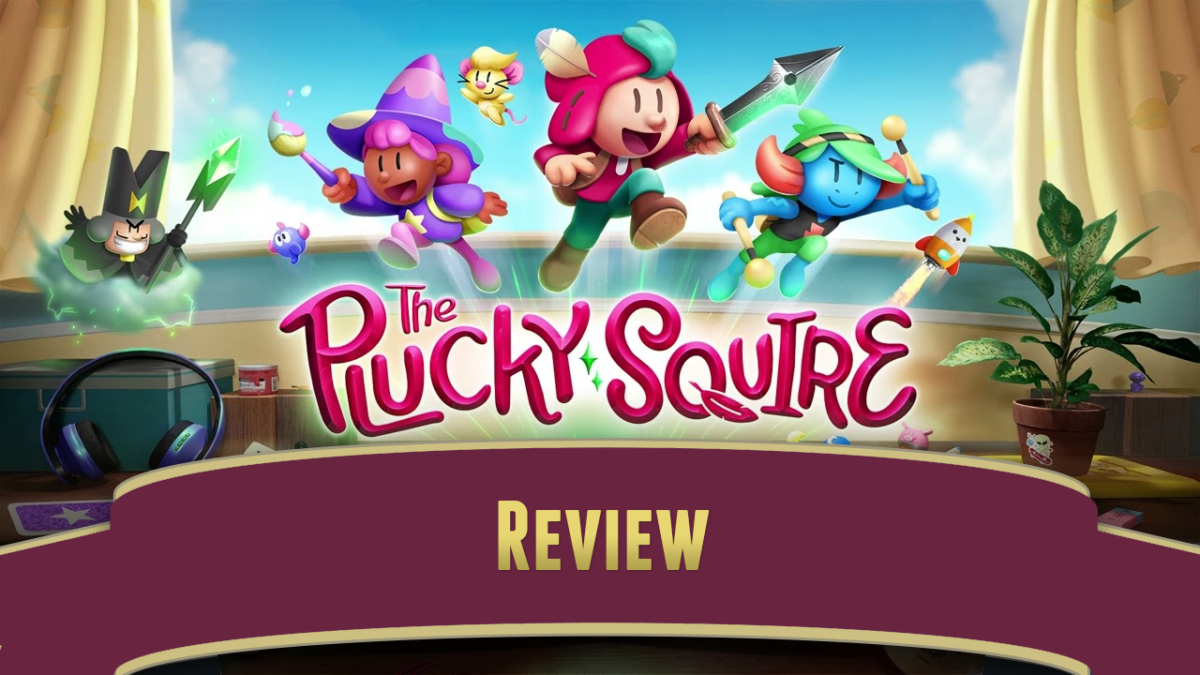My latest double review is up for today with Phantom Abyss and Go Mecha Ball, two great action-filled games. Both played with press keys.
The Plucky Squire Review
My video review for today is on the Plucky Squire — a beautiful action-adventure game for anyone looking for a light read.
Sundry Sunday: Ganon Complains About People Spelling His Name With Two ‘N’s

Sundry Sunday is our weekly feature of fun gaming culture finds and videos, from across the years and even decades.
BitFinity, aka Matthew Taranto, the guy who made the long-running webcomic Brawl in the Family, has kept busy since with making Youtube songs. In addition a number featuring Waluigi, and one with Aeris from Final Fantasy VI, most recently he’s made one starring Ganondorf complaining about people who spell his name wrong, and who also takes the opportunity to dress down peoples’ issues with game language and pronunciation more generally. (3 minute)
O-Chan vs Freeon-Leon
Kid Fenris wishes to remind us all that, in the Western release of Hebereke, called “Ufouria: The Saga” (and by “Western” I don’t mean the US, it never got a NES release over here), its localizers decided to rename its characters, and while doing so even redesigned two of them, turning protagonist Hebe into “Bop-Louie,” and fursuited girl O-Chan into the orange dinosaur Freeon-Leon.
The Hebereke bunch were already a random bunch of crazies, but they’re cute crazies. Sunsoft’s localizers tried to inject them with a dose of hip-serum. Here’s a brief summary:
 Hebe the penguin Changes: Rechristened “Bop-Louie,” given big eyes |
 O-chan the cat-suited girl Changes: Made a wall-eyed lizard not in any kind of suit, renamed “Freeon-Leon” |
 Jennifer the fish/frog thing Changes: Renamed “Gil” |
 Sukezaemon the ghost Changes: Renamed “Shades” |
Kid Fenris notes, in a pair of posts, that, in the recently-released sequel for Switch, the localized versions make cameos during the return to base cutscene!

Hebereke had a much more productive live in Japan, where the series got several sequels. The changed characters are a relic of the time when Sunsoft seemed uncertain of how to approach overseas markets. Blaster Mastered was (and is) revered, but didn’t sell as well as they expected, so they released a weird kind of sequel called Fester’s Quest, with Addams Family characters. They localized a Game Boy version of Hudson’s Bomber King (renamed to “Robowarrior”in English) as a sequel to Blaster Master, called Blaster Master Boy, and sponsored another sequel, made by Software Creations, for the Genesis.
Back on the NES, the license for a Terminator 2 game fell through, so they rebranded it as Journey to Silius, and not being able to get the Superman license scuttled plans to release another game completely, despite a hasty renaming to “Sunman.” Was there ever another game publisher so cursed with licensing issues as Sunsoft?
Two Modern Retro Games That Rock
This is a double review of Iron Meat and Alruna and the Necro-Industrialists both played with press keys.
0:00 Intro
00:14 Iron Meat
2:54 Alruna and the Necro-Industrialists
5 Hours of Halloween-Themed Game Music
Pretty light this time, but light doesn’t mean short. There’s a lot of good tunes in this, with Luigi’s Mansion both leading it up and being well-represented in the sequence. For fun, have this playing during the trick-and/or-treating hours!
Gamefinds: Pac-Man Superfast

Part of Youtube’s doomed-to-fail Playables series, so enjoy this before it gets heartlessly deleted by Google when they decide games on their video platform don’t make sense, isn’t worth it, or whenever Netflix gives up on games and they don’t feel they need to compete on that front anymore.
The game is basically Pac-Man, but with a Championship Edition-like speedup gimmick. As you eat dots, the game slowly increases the simulation rate. it never really gets up to CE’s white-hot speeds, but it does get pretty fast. You get a slight slowdown when you finish a board and lose a life. Since you start with five lives, earn an extra one every 5,000 points, and each of a rack’s three (instead of the arcade’s two) fruit are worth at least 1,000 points, and even more as you advance to later boards, you are unlikely to run out of lives. The game ends after 13 levels, so you have a decent chance of finishing this one!
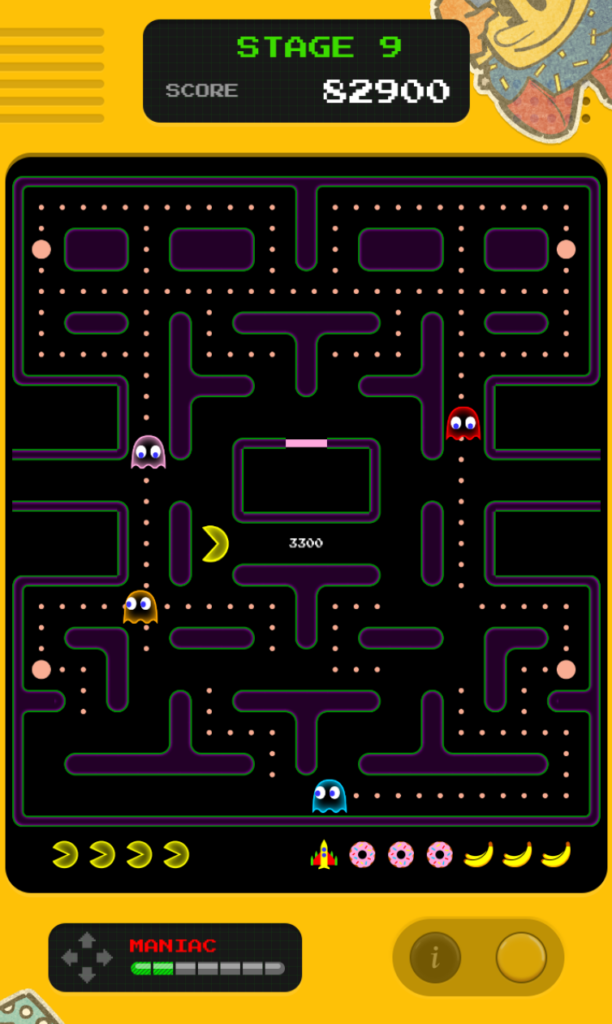
My best score is right around 150,000 points, but I was only playing casually. See if you can do better!
On Gatekeeper Info, Tim Walz and Crazy Taxi
(EDIT: I’m reminded that AOC is a representative, not a Senator. Which is like, lol, if you care about facts or something. Still I’ve corrected it.)
We don’t post about politics much here. This is entirely not because it might drive people away, but it is because much of the rest of the internet is full of it, and we’re feeling a bit overwhelmed by it all, and the terrible consequences if the wrong person (you know who he is) wins in the US in just a week. Anyway, many of our readers aren’t even in the US, and to all of you, I say, I envy you.
But a weird bit of news came out involving Kamala Harris’* VP** candidate Tim Walz that both edges into our lane and is an excuse to talk about something I’ve long been wanting to remark upon, about Sega’s classic arcade racing-game-but-not Crazy Taxi.
(* For non US-people: Kamala Harris is the Democratic candidate for President in 2024. **”VP” stands for Vice President, a largely ceremonial role, but should something happen to the President, the Vice President becomes the new President.)
I’ve played a lot of Crazy Taxi. I played a lot of Crazy Taxi 2 as well. I had a Dreamcast, for the brief period it existed, and they were unquestionably great games for that system, with amazing (if Youtube-unfriendly) soundtracks. Well as it turns out Tim Walz has great taste in games, because back then he had a Dreamcast too, and he had Crazy Taxi for it. And he streamed a few minutes of it, with terrific Democratic*** House Representative**** Alexandria Ocasio-Cortez.
(***”Democratic” refers to the Democratic Party, the US’s left-ish party that currently serves as our feeble bulwark against the hooting forces of awfulness that beset our entire world. ****”House Representative” means a member of the House of Repesentatives, one of the US’s two Legislative Houses. That concludes the US civics portion of our post.)
Most of the stream was taken up with playing Madden, which isn’t in one of our more favored categories, but the five minutes of Crazy Taxi were posted to Walz’s Youtube channel:
I am conflicted about this video. Walz is one of the most personable people ever to be nominated for high office, a genuinely friendly individual. But he isn’t a great Crazy Taxi player. And it might be because he doesn’t know how to do a maneuver called a “Crazy Dash.”
(Let me say now: I don’t even appreciate making jokes that sound like “he’s bad at gaemz lol im voting for other guy,” the stakes are way too high for me to be able to laugh at that. Just, keep it in your hat/purse/gender neutral container, please.)
But this reminded me of something I’ve thought about for a long time, and was driven (heh) home to me over DragonCon this year. There was a Crazy Taxi machine there, at stand-up model, I think with a slightly flaky gas pedal, that made it unreliable to perform Crazy Dashes.

A Crazy Dash is simple to perform once you know how. From a halt, with the gear shift in Reverse, in quick succession shift to Drive and slam the gas pedal. If the timing is right, your car will lurch forward with a burst of speed. And if you do this while driving, shifting to Reverse with foot off the gas, then shifting to Drive and flooring it with the same timing as a Dash, it’s called a “Limiter Cut,” and you get an even greater burst of speed!
Crazy Dashes and Limiter Cuts are essential to even slightly good games of Crazy Taxi, which is why the sit down version of the game puts instructions for how to do them on the control panel, why the Dreamcast version’s manual explains precisely how to do them, and why at least one of the squares in the “Crazy Box” challenge mode is all about teaching you how to perform them. It’s what I’ve come to think of as gatekeeper knowledge: it guards the way to good scores and long games. If you don’t know it, you’re doomed to fail.
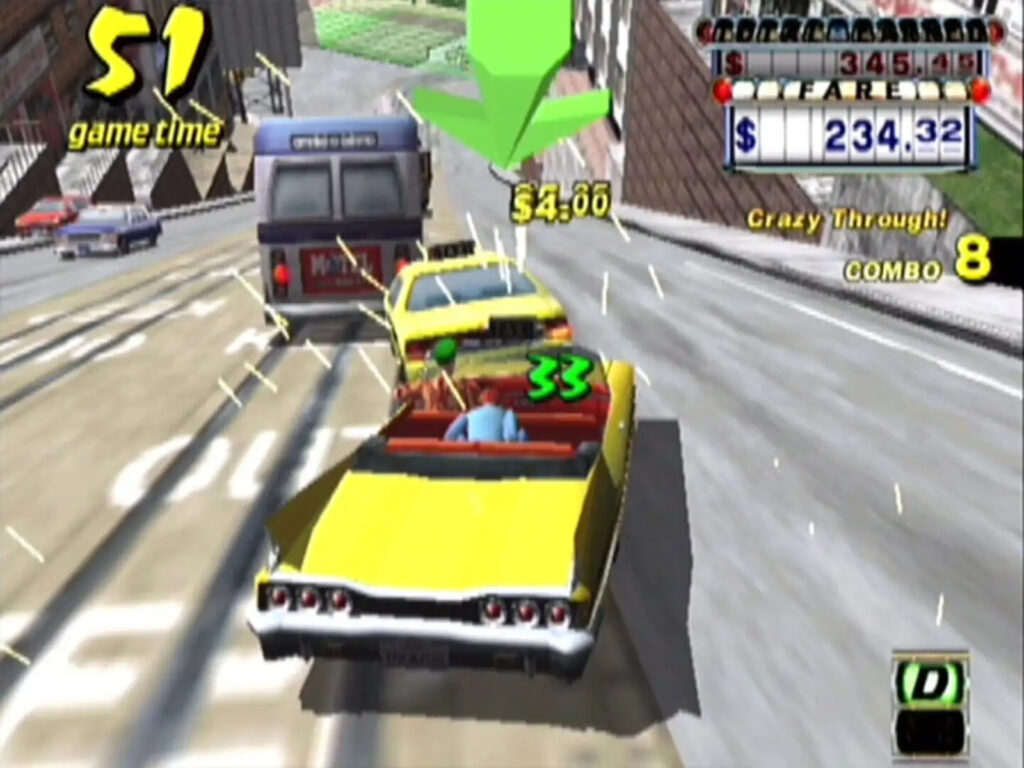
Crazy Taxi is an arcade game. Even on the Dreamcast, it’s just a direct port of the arcade version with added modes. Arcade games want your money, and they don’t want to give you very long games in exchange for it, so the next player can step up and put in their doomed quarters as well. But the catch is, if good players can’t have decently-playing games, then people won’t play. I heard it said that the average target game length was 90 seconds, and average means a substantial number of games will come in under that mark.
Yet, I can play Crazy Taxi for substantially longer than 90 seconds. I can go for 30 minutes. And it’s thanks in part to the Crazy Dash and the Limiter Cut, essential knowledge for the reckless cabbies of Faux San Francisco.
Because of the DragonCon Crazy Taxi machine’s flaky gas pedal, I didn’t have any 30 minute games there. But I did manage to make the scoreboard, barely, at 20th place, with a score of just over $5,000, getting (by the inflated metrics of its scoring system) a Class S license. Thing is, I must have watched a dozen other people play the game at DragonCon this year (the arcades there are always super packed), and none of them came close even to my meager score. Because none of them knew how to do a Crazy Dash. It was a stand-up cabinet, which didn’t have that sticker explaining how to do one.
That’s what I mean by gatekeeper information: it’s literally One Weird Trick to stellar Crazy Taxi scores and game times. Once you know how to do it your journey isn’t over, in fact I think that’s where the game starts to get really interesting, and my highest scores on the easiest difficulty are nearly $70K. But if you don’t know how to at least do a Crazy Dash, you will never get a good game of Crazy Taxi, you just have no chance. You’ll just waste too much time accelerating from a stop, and you’ll have to stop frequently to let off customers and pick up new ones. Its just how it’s designed.
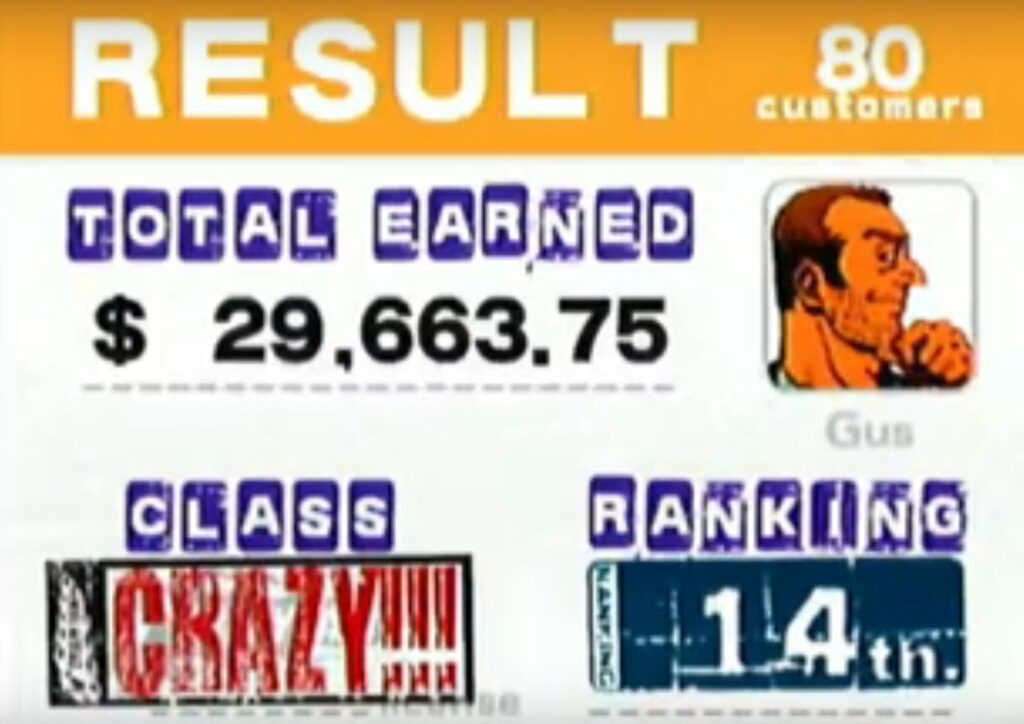
What amazes me is that Crazy Taxi was a hit, it did very well in arcades and on Dreamcast, and yet still most players never learn this information. And in a way, and understand that I’m uncomfortable with this conclusion, that’s for the best? Like how a crane game set to reflex towards a target winning percentage will be more likely not to drop a piece of plush if a lot of players have recently lost, so too are all those players losing quickly at CT allowing the designers to guard half-hour games behind a simple maneuver that, still, few players will ever bother learning. The alternative is to make the trick harder, or even not to have one, dooming everyone, the casual and the dedicated, to those pitiful 90-second games. That’s capitalism for you.
Which shows, I guess, that the illusion of being able to do better is more important to arcade game success than reality? I don’t know, I’m uncomfortable talking about illusions in a post that started out mentioning politics. But hey, Tim Walz! If you read this and want some Crazy Taxi tips, reach out! And good luck in November, please help Kamala Harris to send That Other Person as far away from public office as possible.
Once you start thinking of it in terms of gatekeeper knowledge, you start seeing it everywhere. One-hit kill action games are full of it, since the first time you encounter any enemy, it’s likely to behave in some way that will kill you. The best action games will try to have an enemy demonstrate unexpected behavior at least once before it’s likely to be fatal. And any time a game kills your character out of basic unfairness, like from a sudden unavoidable death trap, that’s gatekeeper info.
UFO 50, for all its greatness, does this a lot. The very first game in the collection, Barbuta, has an instant death laughably close to the start. Some of its games feel like a sequence of deaths you have to experience, each at least once, before you’re allowed to win. But it’s far from unique in this, and in presenting itself as the history of a fictional 80s developer, it could be argued that it’s mirroring the development of game design at the time.
Who the Heck is Dragon Quest’s Mutsuheta?
Kurt Kalata’s Hardcore Gaming 101 posted an article telling us about Mutsuheta, renamed Mahetta in the English localization for the NES. Mutsuheta is one of those figures who only appeared in the original game’s manual. Mutsuheta was the prophet who foretold that a descendant of the great Loto/Erdrick would arise and defeat the armies of the Dragonlord. Other than his mention in the manual, however, he doesn’t appear in any of the games of the Erdrick trilogy, and never appeared onscreen until the first Dragon Quest Builders, where he’s an NPC. He was renamed Myrlund in its English translation, but in Japanese he’s got the name of the character from the manual.

Reading this, I was reminded of https://zeldawiki.wiki/wiki/Impa, Zelda’s nursemaid/servant, who was a similar kind of manual-only backstory figure until Ocarina of Time, where Impa not only appeared as an important NPC, but was revealed to be of the secretive Sheikah tribe, and had ninja skills to boot. She looked a lot different from the aged figure in The Legend of Zelda’s manual.

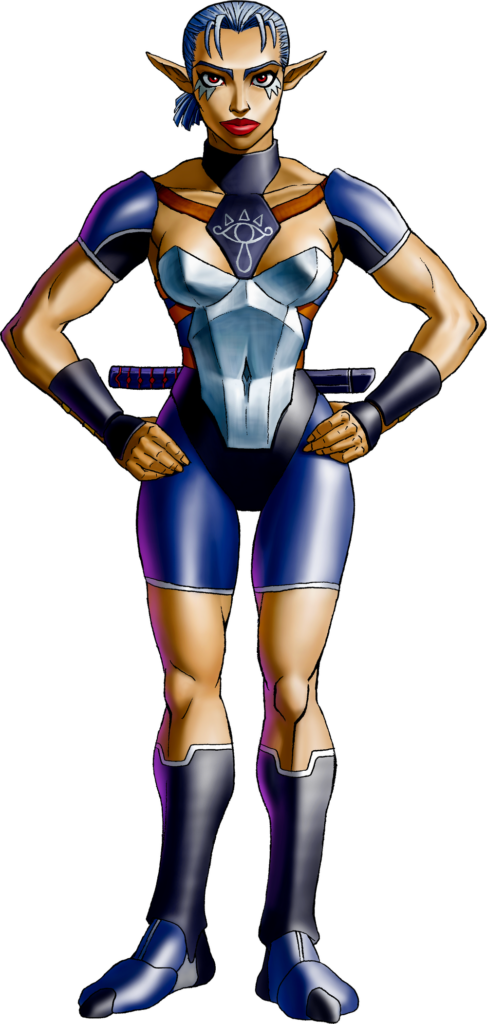
Sundry Sunday: Supper Mario Broth’s Mario Compilation Video

Sundry Sunday is our weekly feature of fun gaming culture finds and videos, from across the years and even decades.
The maintainer of awesome Mario obscurity site Supper Mario Broth has had a hard time of things lately. Their mother died and send them into a spiral of emotional and economic uncertainty, which the community helped out by generously contributing to their Patreon.
As part of their thanks, they posted a Youtube video to answer the question, “What is Supper Mario Broth?” and it’s, well…
It’s great! And very, deeply weird! And it’s only 2 1/2 minutes long! Every image comes from some point in Supper Mario Broth’s rich and aromatic history, and it’s a masterpiece of meme imagery. It’s here:
Every rapid-fire clip in the video is worthy of pausing on and zooming into. It’s incredibly dense! Please enjoy, perhaps with the benefit of the mind-altering substance of your choice. And here’s only a few images from the video:
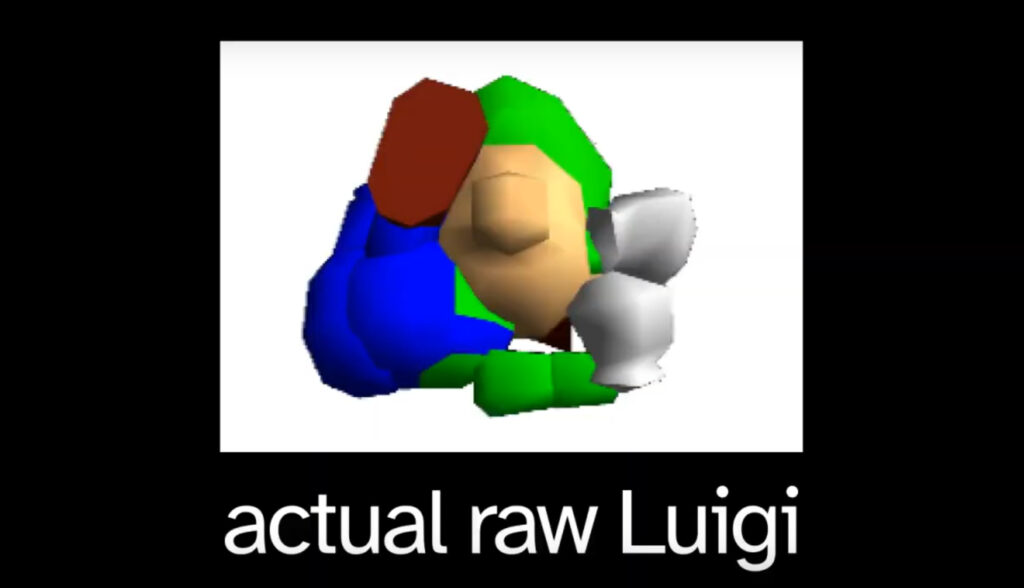
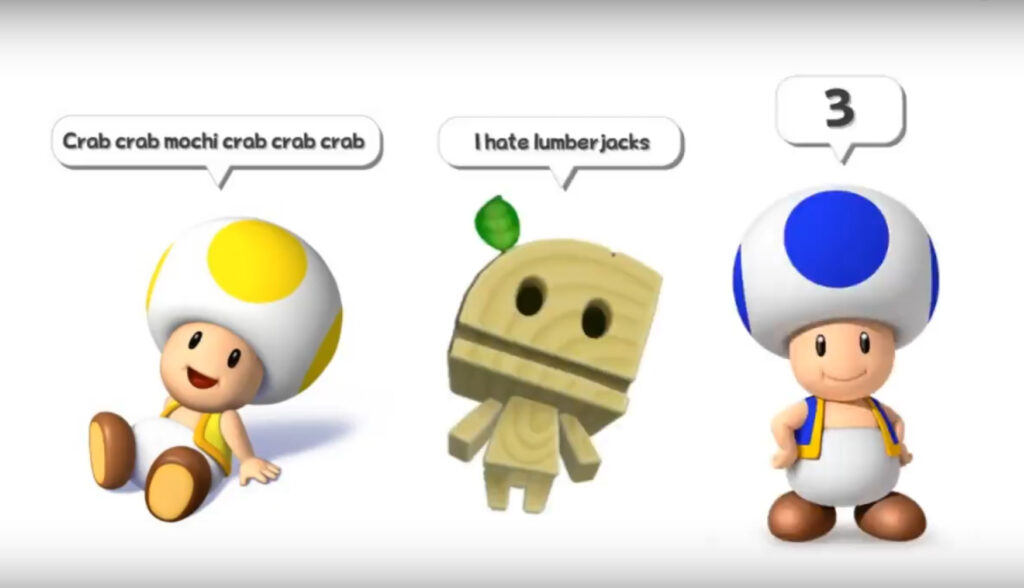

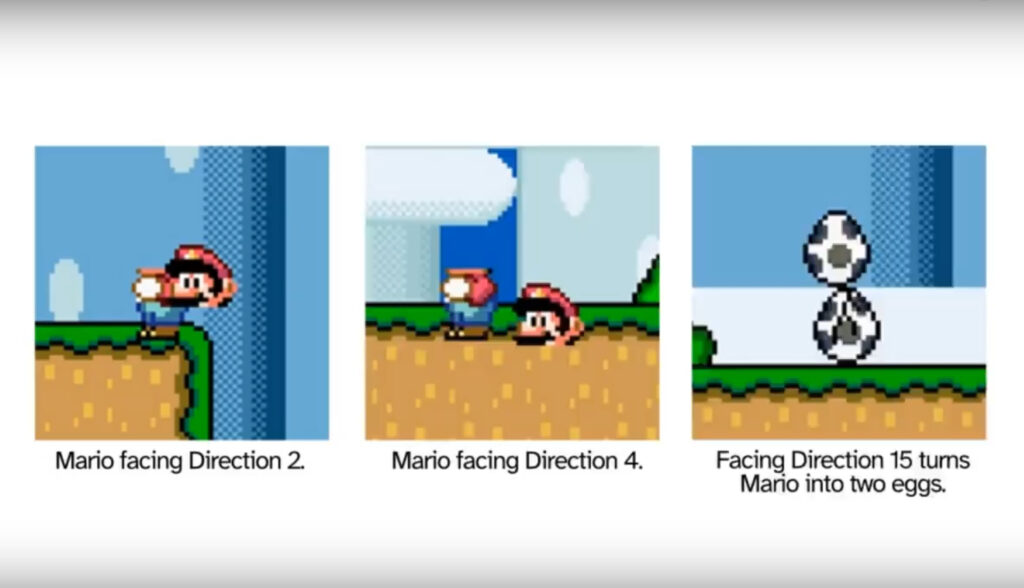
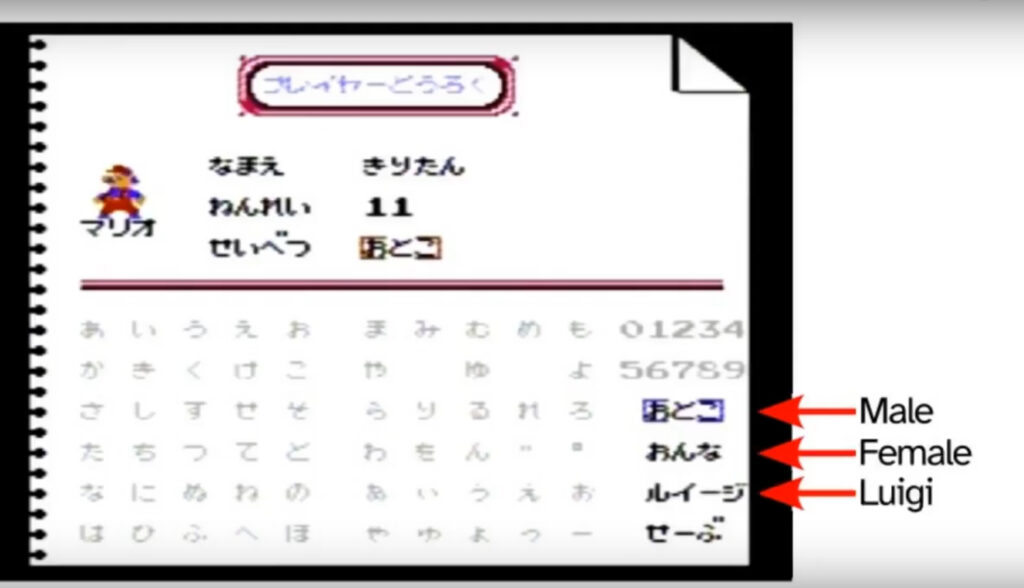
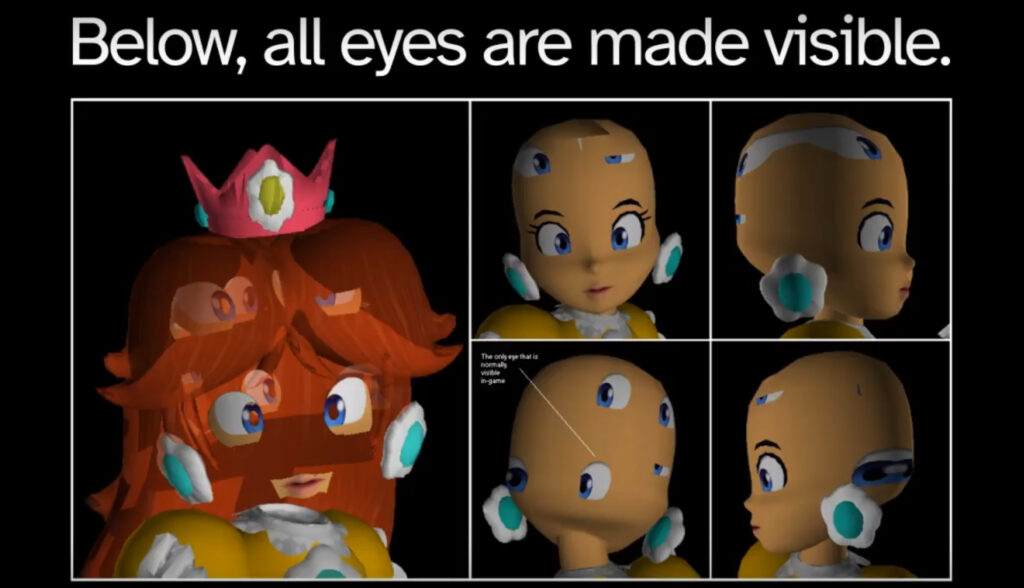

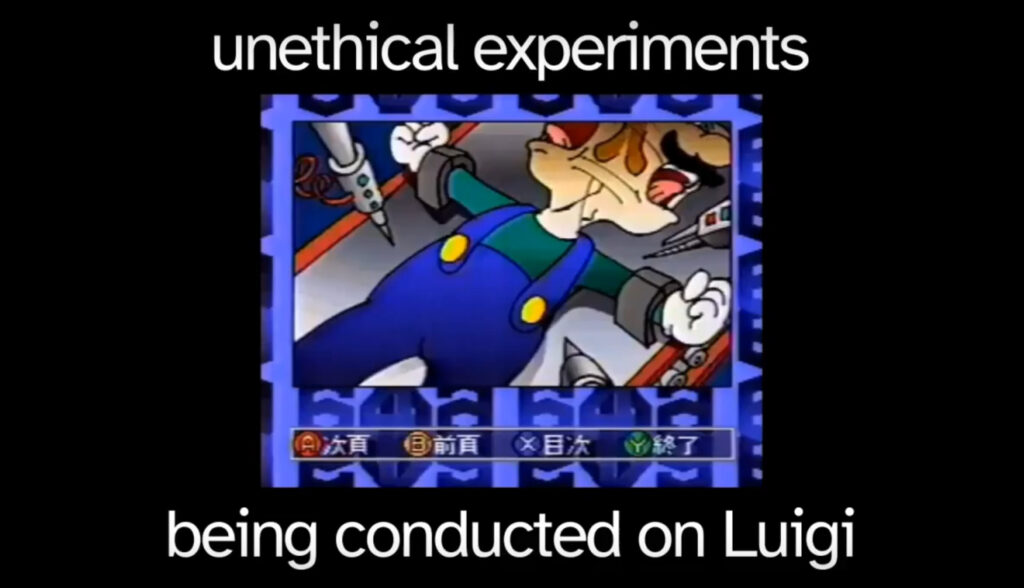
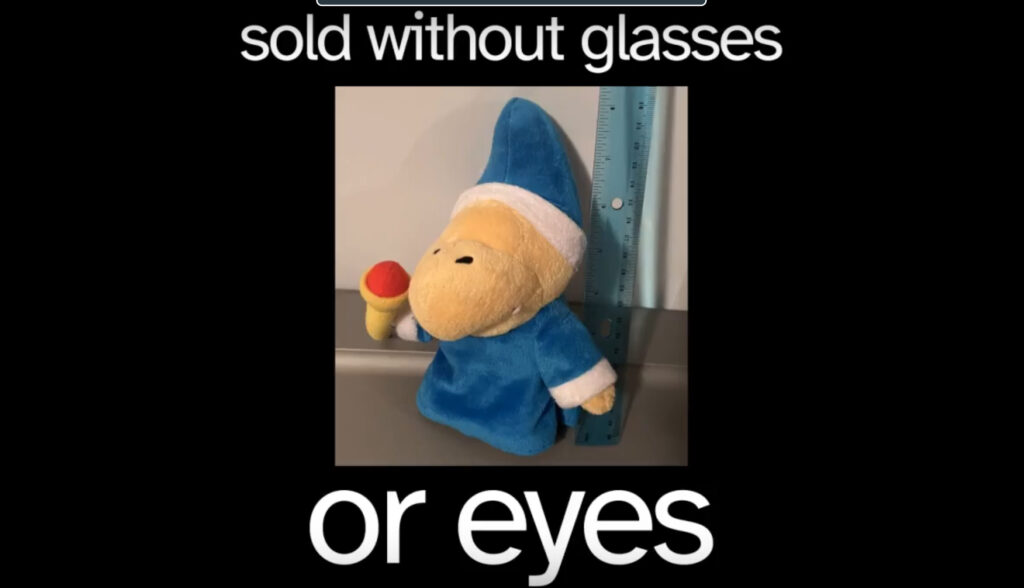
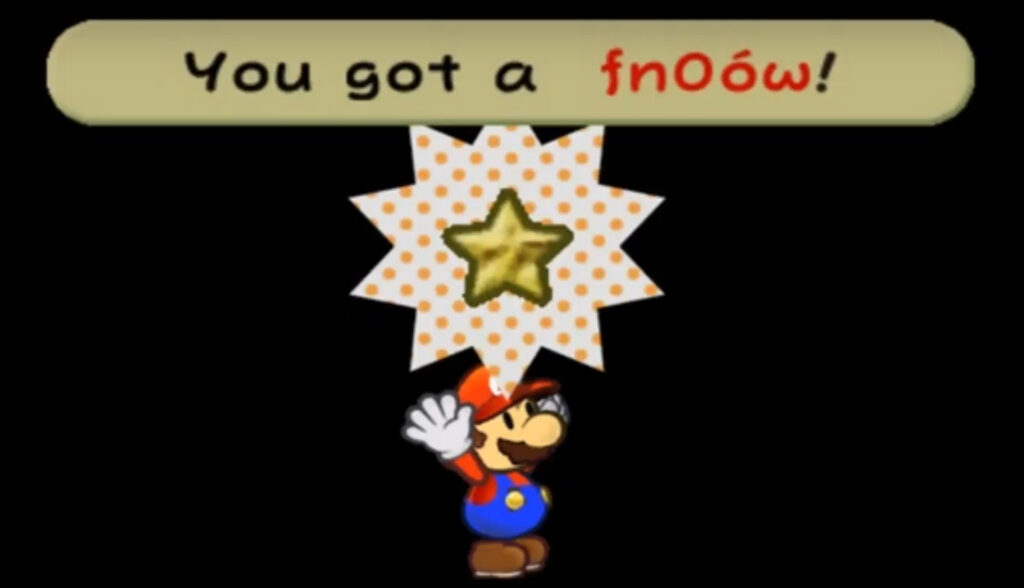

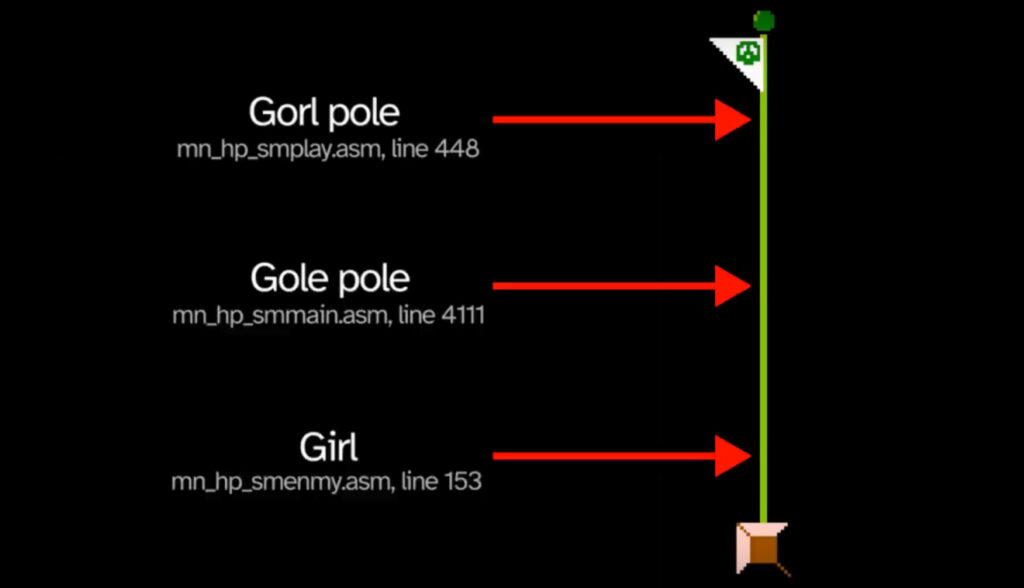
Chip Tanaka’s Fourth Album: Desatar
Chip Tanaka is the most recent pseudonym of one of the best, certainly one of the most influential, game composers of all time, Hirokazu Tanaka, a.k.a. Hip Tanaka, who made contributions to many NES-era games. His most distinctive soundtracks are probably Metroid and Kid Icarus, but he also worked on Dr. Mario, Super Mario Land, Tetris, Mother and Earthbound. After those he helmed Pokemon co-producer Creatures Inc. for 22 years, until just last year. His most recognizable contributions from an outside perspective, though, are probably still his musical works.
We’ve linked to at least one of his songs before, the Hammerhead Shark Song from his second album Domingo. Its video was animated by Toby Fox, the Undertale/Deltarune maker, and it does a good job of combining the charms both of Tanaka’s music and Fox’s art.
The new album Desatar combines chiptune waveforms with real-world instruments to produce a distinctive mixture. There’s a sampler up on Youtube (3 minutes, embedded below), and the whole thing can be heard on Spotify (though it requires making an account).
The End of Masahiro Sakurai on Creating Games
He mentions that it’s possible that he might dust off the channel from time to time, but that he feels it has accomplished its mission. Here it is (46 minutes):
To remind everyone: Sakurai is the famed creator of Kirby, Meteos and Smash Bros. In the video, he relates the surprising fact that no only did he write out nearly every script, 256 in all, before the first episode even aired, but he also filmed them all in advance too! That’s why he looks older in this video: it’s the first time he’s been before the camera, with just three exceptions, since it started. The video, in fact, is mostly about how the series itself was made, which as it turns out was done without a camera crew, and in a residence of his too, outside of a recording studio and without soundproofing, so production had to pause if am ambulance drove by outside, and couldn’t happen at all if it was raining.
I have no doubt that these videos will be an important document in the coming years, not just as a guide to making video games, but also preserving the processes of current-day game development, and the words and thoughts off one of the foremost game designers of our age. BTW, note the split second of Rogue at 18:58!
The video has always had a feel like maybe Nintendo was helping out with it, but as it turns out, other than approving the use of their game footage, they weren’t greatly involved. The similar feel may be due to the use to HIKE, a.k.a. QBIST, a production company that Nintendo also uses for some of their videos.
To close this out, I’ll link a short bit from earlier on, at a mere 2 1/2 minutes, the video about Sakurai’s cat, Fukurashi. Meow, or perhaps, nya!


